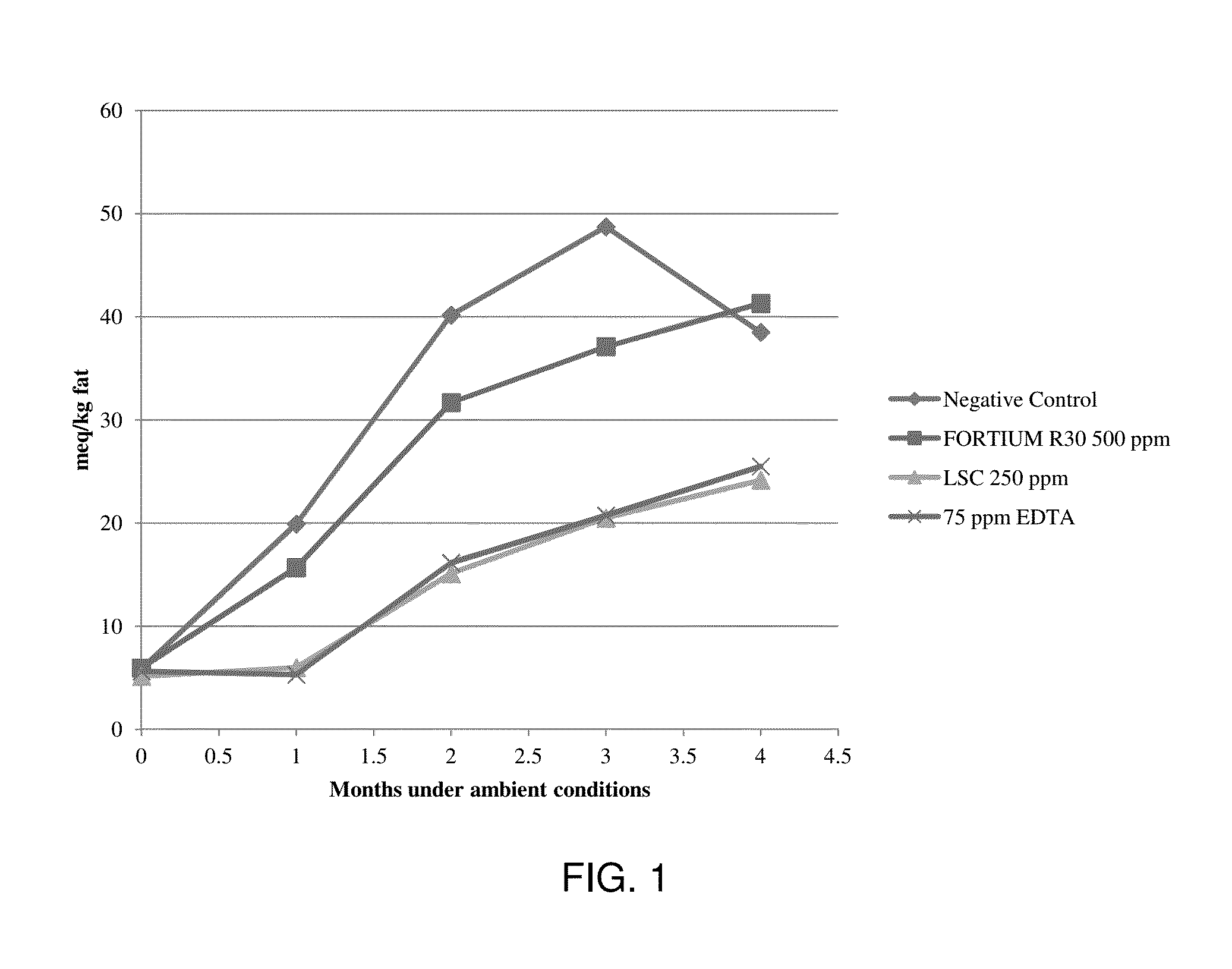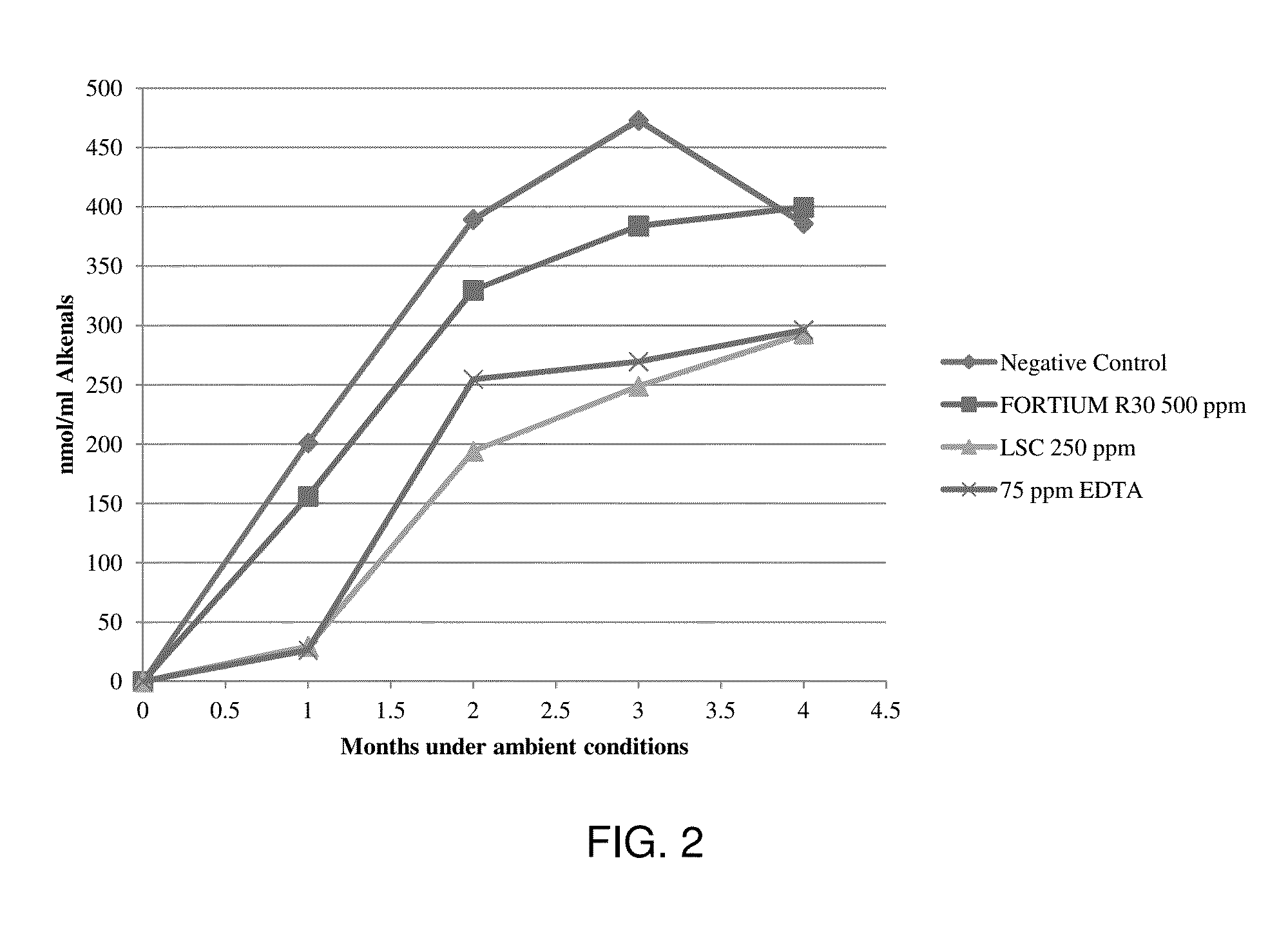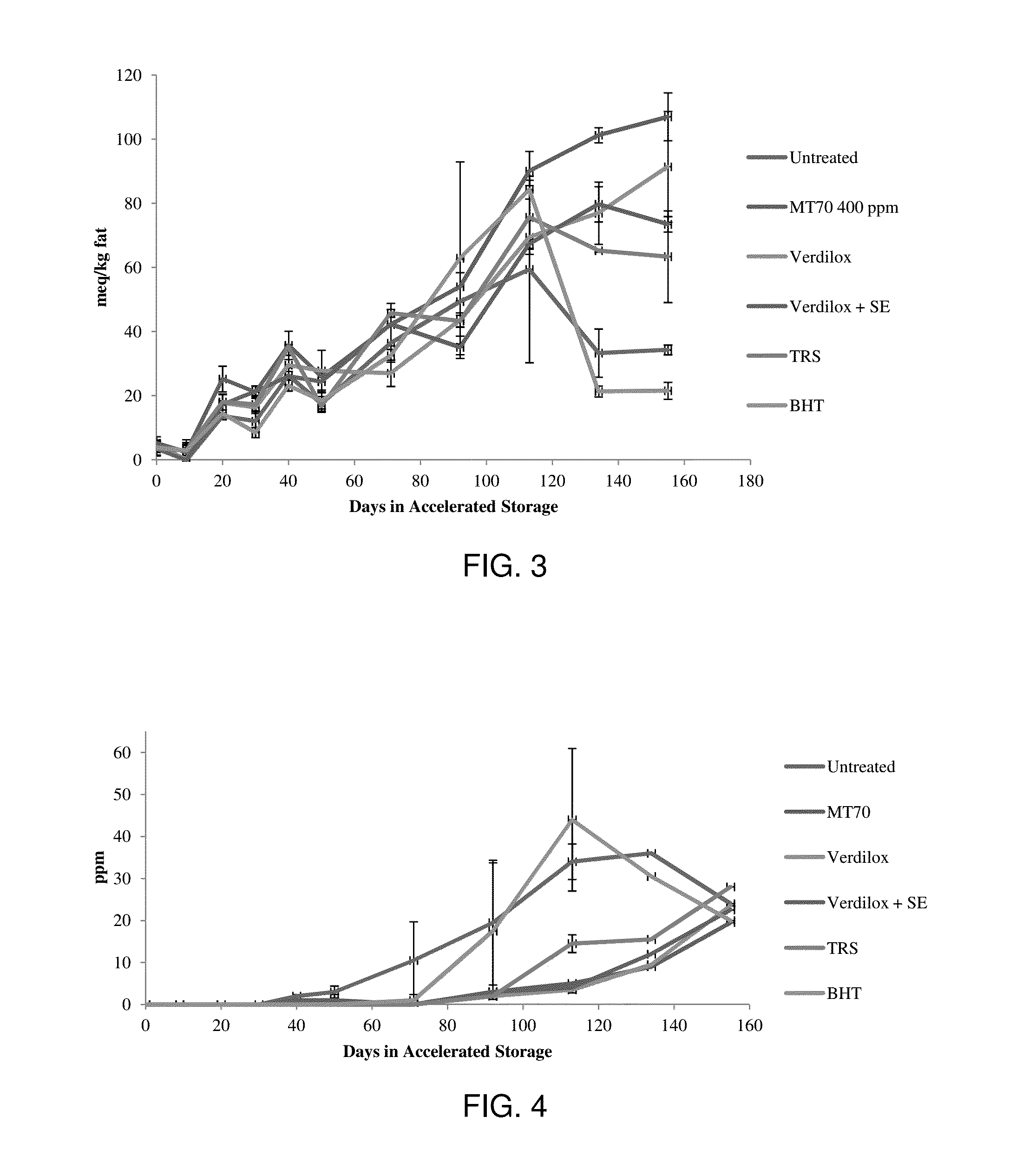Delaying oxidation in food systems by use of lipid soluble tea catechins
a technology of lipid soluble tea and catechins, which is applied in the direction of food ingredients as antioxidants, meat/fish preservation using chemicals, and fatty substance preservation using additives, etc. it can solve the problems of limited application in high fat food matrices, prolong the oxidative stability of meat products, and delay the formation of oxidative products
- Summary
- Abstract
- Description
- Claims
- Application Information
AI Technical Summary
Benefits of technology
Problems solved by technology
Method used
Image
Examples
example 1
Meat
[0033]The shelf life of processed meats is limited by microbial spoilage and oxidative rancidity. Lipid oxidation is responsible for undesirable flavor and color changes, and is the primary mode of failure for frozen meats. Natural extracts derived from plant materials have been shown to delay these oxidative changes. Finely textured pork (FTP) is made from pressing / grinding pork shoulder bones to retrieve protein from the bones. The FTP is then heated to around 50° F. after pressing, placed into 50 lb boxes, palletized and sent to a blast freezer. Due to the abusive processing parameters, the current shelf life is 20 days frozen and the desired shelf life is 30-45 days for a customer to consider using this ingredient in pepperoni (at 10-15% of meat block). The gold standard would be 45 days. The objective of this study was to evaluate the impact of various treatments including FORTIUM®brand R30 liquid (rosemary extract / sunflower oil), FORTIUM®brand RGTWS 1200 Liquid (rosemary / g...
example 2
Mayonnaise
[0050]Mayonnaise was produced in-house and treated with FORTIUM®brand R30 (rosemary extract / sunflower oil) (R30), lipid soluble catechins (LSC), and Ethylenediaminetetraacetic acid (EDTA) (as positive control), as well as an untreated negative control and stored under ambient conditions. The oxidation of the mayonnaise was monitored by testing peroxide value (PV) and alkenals monthly for 4 months. The results showed that LSC and EDTA treated mayonnaise both resulted in lowest amount of oxidation products throughout the test period, indicating that LSC may be useful as a replacement for EDTA in mayonnaise.
Materials and Methods
[0051]Mayonnaise Production.
[0052]To make the mayonnaise (see Tables 8 and Table 9), the egg yolks were first whipped in a KitchenAid® mixer (Heavy Duty) using the wire whip attachment for 30 seconds on setting #2. Salt and mustard were added, and mixed for an additional 30 seconds on setting #4. The sides were scraped with a spoon 3 times. The water w...
example 3
Cereals
[0066]Although relatively low in fat, ready to eat cereals are still subject to oxidative rancidity. The objective of this study was to treat extruded cereal with various combinations of ingredients and compare to untreated (negative control), butylated hydroxyl toluene (BHT) (synthetic positive control) and FORTIUM®brand MT70 (mixed tocopherols) (naturally derived positive control). Samples were stored under accelerated conditions (40° C.). The primary factors influencing the shelf life of cereal are oxidative by-products (peroxide value −PV), volatile secondary oxidative by-products (hexanal) and most importantly, sensory attributes (aroma and flavor). The accumulation of oxidation products was monitored instrumentally by testing peroxide values (PV), and hexanals. Changes in the sensory attributes of aroma and flavor were also monitored. Both chemical evaluation and sensory evaluation showed an improvement over the untreated control when antioxidant combinations including ...
PUM
 Login to View More
Login to View More Abstract
Description
Claims
Application Information
 Login to View More
Login to View More - R&D
- Intellectual Property
- Life Sciences
- Materials
- Tech Scout
- Unparalleled Data Quality
- Higher Quality Content
- 60% Fewer Hallucinations
Browse by: Latest US Patents, China's latest patents, Technical Efficacy Thesaurus, Application Domain, Technology Topic, Popular Technical Reports.
© 2025 PatSnap. All rights reserved.Legal|Privacy policy|Modern Slavery Act Transparency Statement|Sitemap|About US| Contact US: help@patsnap.com



